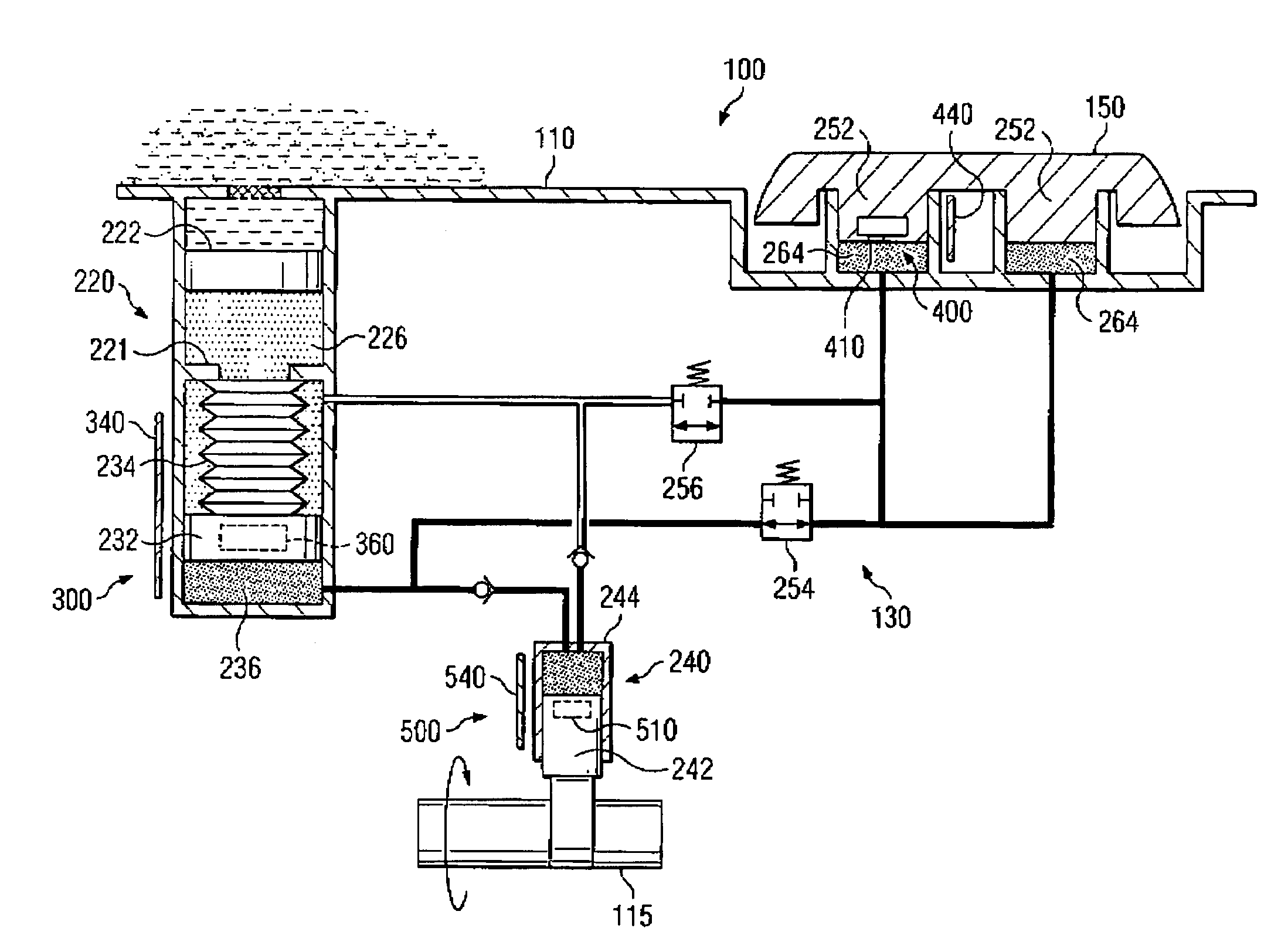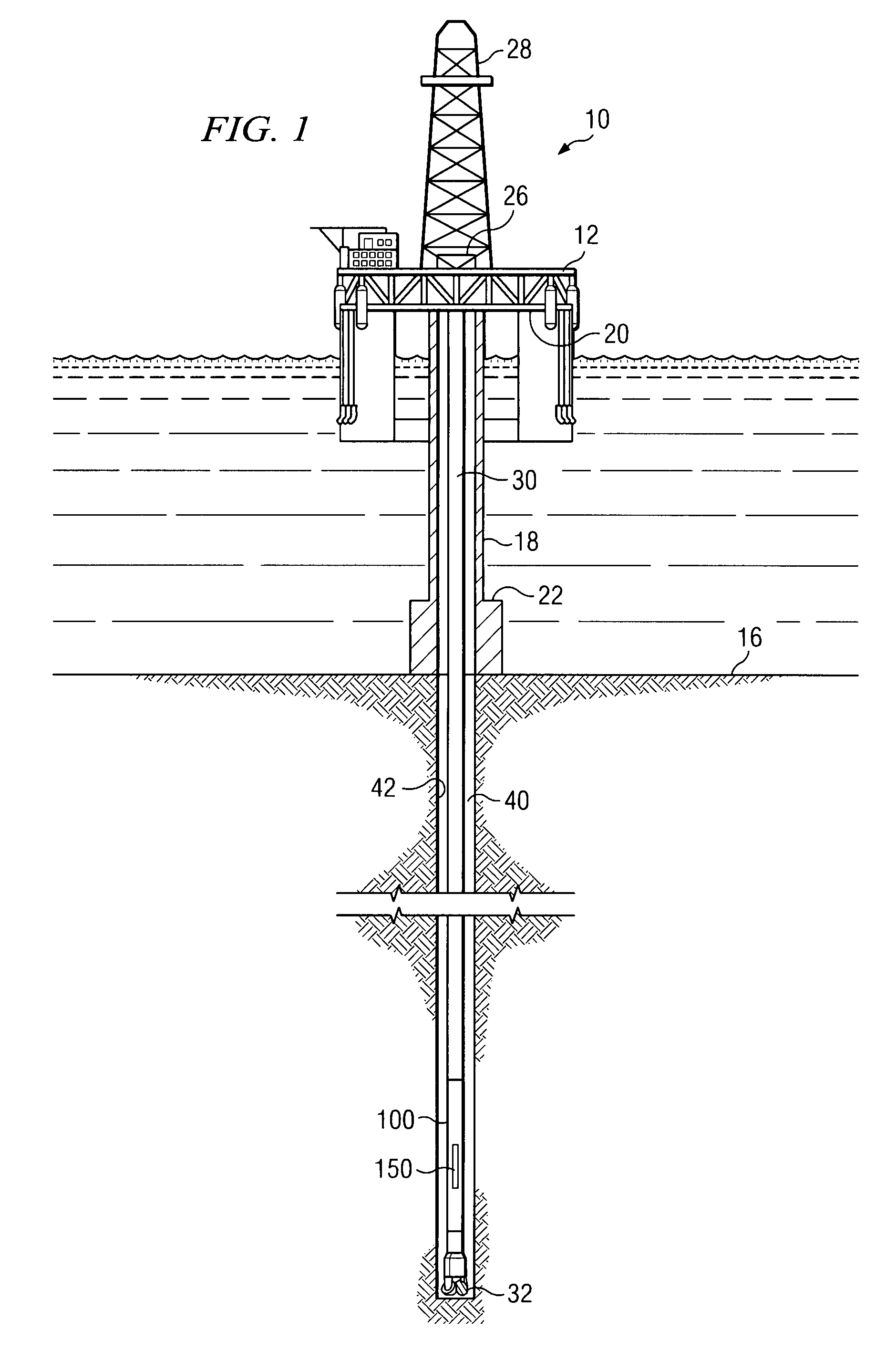Linear position sensor for downhole tools and method of use
a position sensor and downhole technology, applied in the field of downhole tools, can solve the problems of inaccurate pressure transducer, potentiometers are known to be susceptible to mechanical wear and temperature drift, and the potentiometer is known to suffer from various drawbacks, etc., to achieve accurate and reliable measurements, low mass, and low cost
- Summary
- Abstract
- Description
- Claims
- Application Information
AI Technical Summary
Benefits of technology
Problems solved by technology
Method used
Image
Examples
embodiment 400
[0038]With reference now to FIG. 5, sensor embodiment 400 is shown in greater detail. As described above, position sensor 400 is disposed to measure the position of blade 150 (FIGS. 2 and 3). As shown on FIG. 5, blade 150 is in its fully retracted position within housing 110. In the embodiment shown, magnet assembly 410 is fixed to an inner surface of the blade 150 (inside piston 252 as shown on FIG. 3). As hydraulic fluid is pumped into chamber 264, the blade extends outward from a longitudinal axis of the tool in the direction of arrow 405. Magnetic sensor array 440 is deployed within the blade housing in close enough proximity to magnet assembly 410 such that at least one of the sensors 450A-H on sensor array 440 is in sensory range of magnetic flux emanating from the assembly 410. In the exemplary embodiment shown on FIG. 5, magnet assembly 410 is substantially similar to magnet assembly 360′, although an assembly similar to magnet assembly 360 may also be equivalently utilized....
embodiment 500
[0040]Turning now to FIG. 6, sensor embodiment 500 is shown in greater detail. Position sensor 500 is disposed to measure the axial position of piston 242 in housing 244. As shown on FIGS. 3 and 6, rotation of shaft 115 causes piston 242 to reciprocate in housing 244 (e.g., due to a cam on the shaft). Magnetic sensor array 540 is deployed on an outer surface of housing 244 in close enough proximity to magnet assembly 510 such that at least one of the sensors 550A-I is in sensory range of magnetic flux emanating from the assembly 510. In the exemplary embodiment shown on FIG. 6, magnet assembly 510 is substantially similar to magnet assembly 360′, although an assembly similar to magnet assembly 360 may also be equivalently utilized. Sensors 550A-I may be deployed having substantially any suitable alignment (e.g., parallel or perpendicular to array 540).
[0041]With continued reference to FIGS. 3 and 6, it will be appreciated that sensor embodiment 500 is disposed to measure several too...
PUM
 Login to View More
Login to View More Abstract
Description
Claims
Application Information
 Login to View More
Login to View More - R&D
- Intellectual Property
- Life Sciences
- Materials
- Tech Scout
- Unparalleled Data Quality
- Higher Quality Content
- 60% Fewer Hallucinations
Browse by: Latest US Patents, China's latest patents, Technical Efficacy Thesaurus, Application Domain, Technology Topic, Popular Technical Reports.
© 2025 PatSnap. All rights reserved.Legal|Privacy policy|Modern Slavery Act Transparency Statement|Sitemap|About US| Contact US: help@patsnap.com



